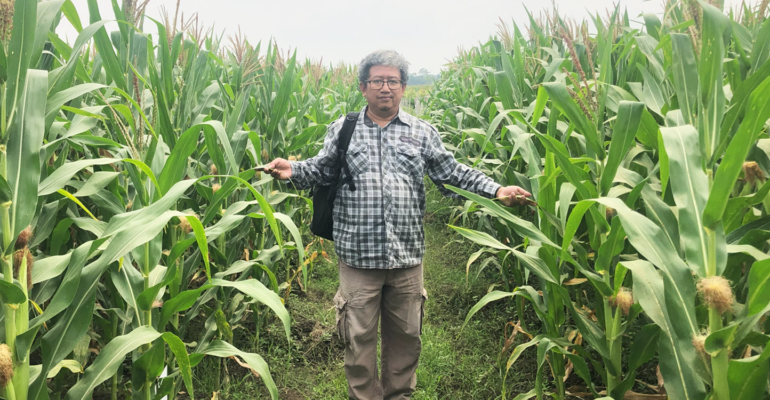IPB University Professor Recommends Phosphorus Fertilization Management for Dryland Acid Soils in Java, Kalimantan and Sumatra

Professor of Department of Soil Science and Land Resources, Faculty of Agriculture, IPB University, Prof Arief Hartono shares recommendations for phosphorus (P) fertilization management on dryland acid soils in Indonesia. Areas in Indonesia that have drylands are spread across western Java Island, Sumatra Island, and Kalimantan Island.
Prof Arief explained that this fertilizer management is based on the physico-chemical properties of acid soil and the characterization of its phosphorus behavior. “This strategy is directed to increasing the efficiency of phosphorus fertilization,” he said.
He said that fertilization management is important because dryland areas in Indonesia make up about 75 percent of the total land area in Indonesia. The total is much larger than the non-marsh wetlands. Not only that, but drylands in Indonesia also have acidic soil reactions. The implication is that the nutrient status is low and phosphorus (P) is categorized as very low to low.
“Due to the very low status of phosphorus (P) nutrients, it is recommended that P fertilization must be carried out with knowledge of its uptake, transformation, and release characteristics,” he explained.
He elaborated that the estimation of P elements in acid soils can be done by three things. These are factors associated with oxides, such as Fe and Al hydrous oxide content. The other is the acidity associated with the content of 1.4 nm klei or clay minerals and soil C-organic content. These soil parent materials can be used to predict the level of phosphorus uptake in the soil.
“The key to P availability for plants in acidic drylands is uptake, accompanied by strong binding energy and P release, so the right fertilization strategy depending on the psychochemical properties of the soil is very important,” added Prof Arief.
He recommends that fertilization be done in stages on soils that develop from sedimentary rocks, granite, and volcanic sediments. For example, one week after planting (MST) one third, followed by four weeks after planting (MST) another third. This strategy is done because the soil contains a higher labile P fraction and is already available to plants. ting (MST) one third, followed by four weeks after planting (MST) another third. This strategy is done because the soil contains a higher labile P fraction and is already available to plants.
Meanwhile, for soils developed from volcanic ash and andesite, P fertilizer can be applied all at once. The P fraction contained in the soil tends to be non-labile and must first be transformed to the labile fraction.
Amelioration materials containing silica and organic matter should be applied before P fertilization into the soil. This is necessary so that the material is applied as a soil improver to reduce P uptake. These silicate compounds are able to transform the non-labile P fraction to the labile P fraction so that the P applied can be more available to plants.
“Therefore, P fertilizers containing silicon compounds and organic materials are recommended as soil improvers to increase the efficiency of P fertilization,” explained the IPB University Soil Expert. (MW) (IAAS/ZQA)



